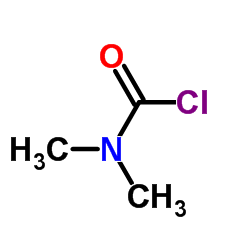Relationships between the levels of binding to DNA and the carcinogenic potencies in rat nasal mucosa for three alkylating agents.
C A Snyder, S J Garte, A R Sellakumar, R E Albert
Index: Cancer Lett. 33(2) , 175-81, (1986)
Full Text: HTML
Abstract
Three direct-acting carcinogens, beta-propiolactone (BPL), methylmethane sulfonate (MMS), and dimethylcarbamyl chloride (DMCC), were evaluated for their carcinogenic potencies in the nasal mucosa of rats and for their abilities to bind in vivo to rat nasal mucosal DNA. The relative carcinogenic potencies of BPL and MMS corresponded well with their overall levels of binding to nasal mucosal DNA. DMCC, however, the most potent carcinogen of the three compounds, produced the lowest level of binding to nasal mucosal DNA. These results indicate that the DNA adducts formed by DMCC in rat nasal mucosa DNA are more readily expressed as cancer than those formed by BPL or MMS.
Related Compounds
| Structure | Name/CAS No. | Molecular Formula | Articles |
|---|---|---|---|
 |
dmcl
CAS:79-44-7 |
C3H6ClNO |
|
Phenyldichlorophosphate as an aid in studies of decarbamylat...
1988-05-01 [Anal. Biochem. 170(2) , 451-5, (1988)] |
|
Dimethylcarbamoyl chloride.
2011-01-01 [Rep. Carcinog. 12 , 171-2, (2011)] |
|
Dimethylcarbamoyl chloride.
2004-01-01 [Rep. Carcinog. 11 , III107, (2004)] |
|
Dimethylcarbamoyl chloride.
2002-01-01 [Rep. Carcinog. 10 , 106-7, (2002)] |
|
Dimethylcarbamoyl chloride.
1999-01-01 [IARC Monogr. Eval. Carcinog. Risks Hum. 71 Pt 2 , 531-43, (1999)] |